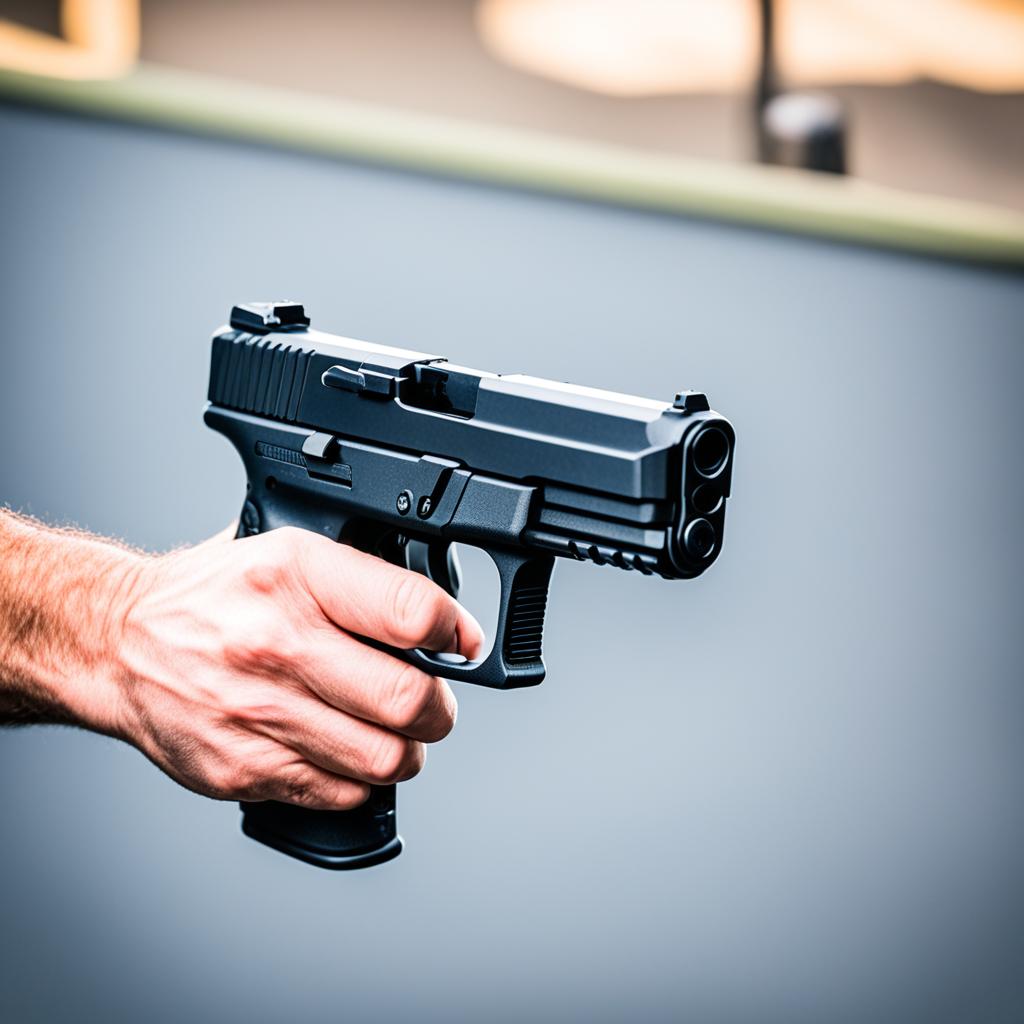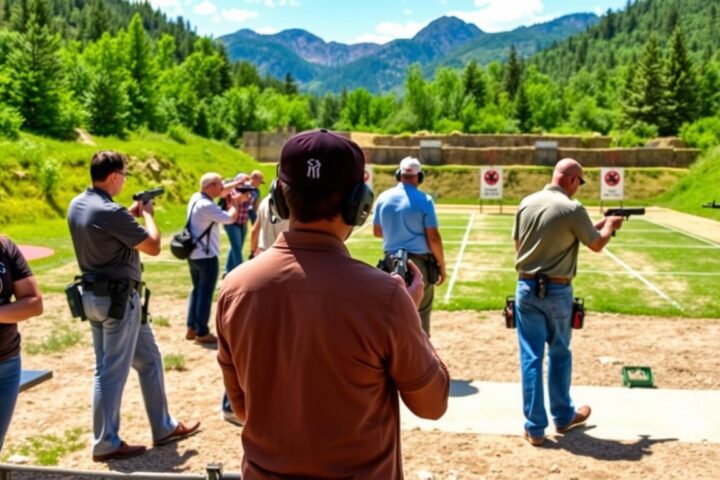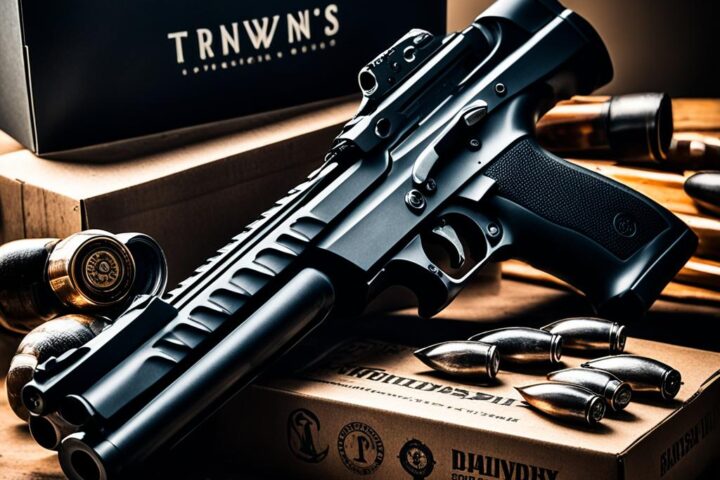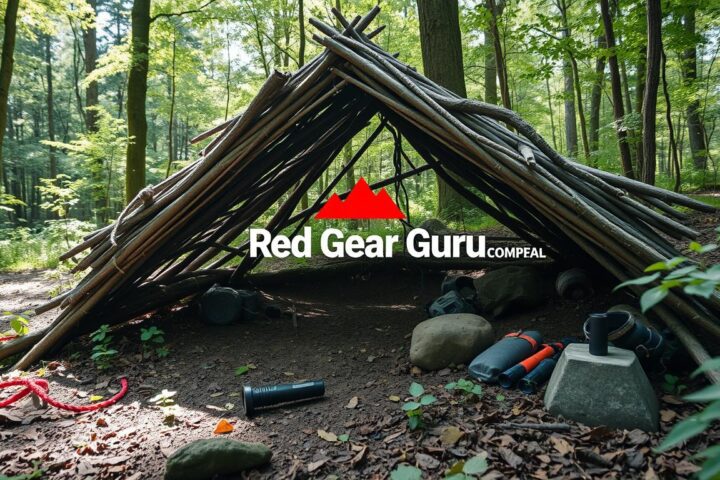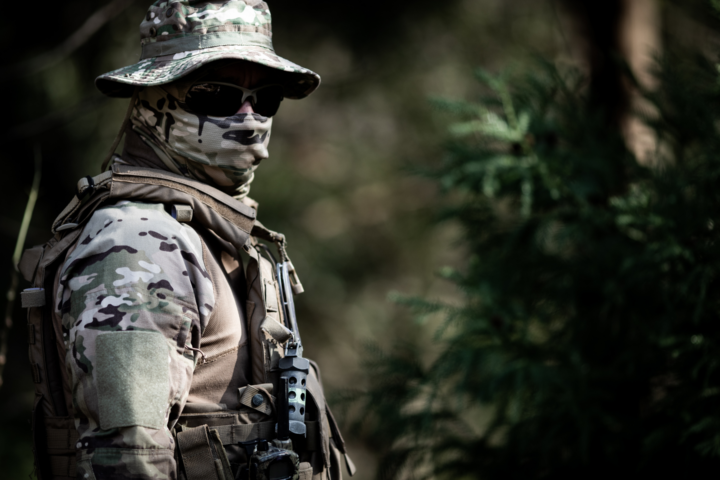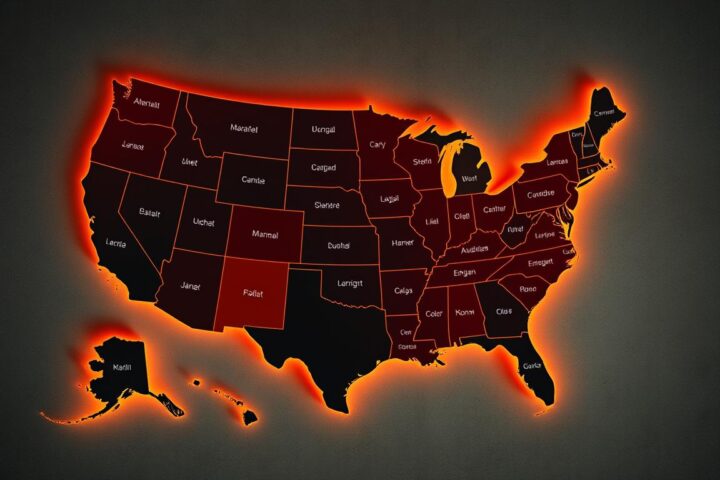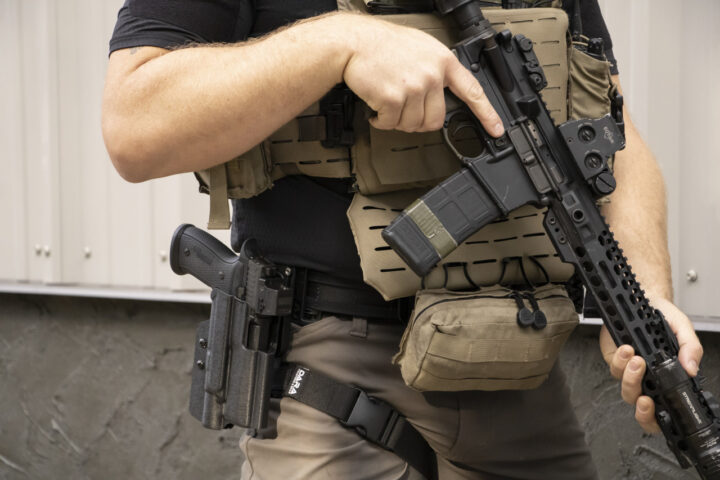As a responsible gun owner or enthusiast, your safety and the safety of those around you should always be the top priority. But do you truly know the fundamental firearm safety rules and proper range etiquette? Can you confidently navigate the legal requirements for gun ownership and usage? If not, this comprehensive guide is exactly what you need to ensure you’re armed with the essential knowledge to handle firearms safely and responsibly.
Key Takeaways
- Understand the critical firearm safety rules to prevent accidents
- Learn proper gun handling procedures for safe and responsible use
- Familiarize yourself with shooting range regulations and etiquette
- Ensure compliance with firearm license requirements in your area
- Adopt best practices for secure firearm and ammunition storage
Fundamental Firearm Safety Rules
Following firearm safety tips is key for safe gun use. These basic rules help keep the gun user and others safe. They prevent accidents and keep gun handling procedures at a high level.
Treat Every Firearm as if It Were Loaded
Always think a gun is loaded, even if you’re sure it’s not. This keeps you alert and lowers the chance of an accident.
Never Point a Firearm at Anything You Don’t Intend to Shoot
Always keep your gun aimed at a safe spot. Don’t point it at anything you don’t want to hit, as a mistake could cause harm.
Keep Your Finger off the Trigger Until Ready to Shoot
Having the right firearm license and proper storage is important. But, the key safety rule is to keep your finger off the trigger until you’re ready to shoot. This can prevent accidents.
Following these ammunition safety guidelines ensures firearms are used safely, at the shooting range and elsewhere.
“Firearm safety is not just a set of rules, but a mindset that should permeate every aspect of gun ownership and use.”
Proper Gun Handling Procedures
Handling firearms with care is key for safety at the range and elsewhere. As a gun owner or enthusiast, learning gun handling procedures is crucial. This includes loading and unloading, and keeping control of the muzzle and trigger.
Always treat guns as if they’re loaded, even when you’re sure they’re not. This habit helps you stay safe when handling your gun. Also, never point your gun at something you don’t plan to shoot. Keeping control of the muzzle is vital to prevent accidents and keep others safe.
Keeping your finger off the trigger until you’re ready to shoot is also key. This simple rule can prevent accidental shots. Learning these gun handling procedures builds confidence and lowers the risk of accidents. This lets you move safely at the range and at home.
“Proper gun handling is the foundation of firearm safety. Develop these skills, and you’ll be well on your way to becoming a responsible, proficient shooter.”
Learning about gun handling procedures is just the start. You should also know the rules of the shooting range, firearm license requirements, and how to store your gun and ammo safely. Adding these safety steps to your routine makes gun ownership responsible and enjoyable.
Shooting Range Rules and Regulations
When you go to a shooting range, it’s important to know the rules. These rules help keep everyone safe. Always listen to the range safety officer. They make sure the range is safe and run smoothly.
Check-in and Sign-in Requirements
When you get to the range, you’ll need to check in and sign in. This lets the staff know who’s there and checks you have the right papers, like a valid firearm license. If you don’t do this, you might not get into the range.
Range Safety Officer Instructions
The range safety officer keeps the range safe and in order. Always listen to their instructions. They tell you what to do to stay safe, like stopping shooting when told to.
If you don’t follow their instructions, you might get in trouble or have to leave. Shooting range rules are there for a reason. They keep everyone safe.
“The safety of all range users is the top priority, and following the range safety officer’s instructions is crucial to maintaining a secure and controlled shooting environment.”
By following the range officer instructions and shooting range rules, you’ll have a safe and fun time. You’ll also show respect for the place and its staff.
Firearm License Requirements and Legalities
As a responsible gun owner, knowing the laws about guns is key. Laws about owning and using guns can change a lot depending on where you live. It’s important to follow these laws to avoid legal trouble and keep your gun use safe.
In the US, many states need you to have a [firearm license] to own and use a gun. This means you might need to take safety courses, pass background checks, and get permits. Not following these [firearm legalities] can lead to big problems, like fines or even criminal charges.
Make sure to look into the laws in your state and area. Some places have stricter rules, like needing to register guns or limiting certain types of guns. Knowing and following the [firearm legalities] helps keep you and others safe.
The [firearm license requirements] and [firearm legalities] are there to protect everyone. Learning about these rules and following them is smart. It keeps you out of legal trouble and supports public safety.
For more details on [firearm license requirements] and [firearm legalities] in your area, talk to your local police or check your state’s firearms website.
Several reserve soldiers have publicly said they won’t go back to service. This shows how crucial it is to know and follow gun laws.
Safe Firearm and Ammunition Storage
Keeping your guns safe is key to being a responsible gun owner. Make sure to store them in a locked cabinet or safe. It’s also vital to follow rules for storing ammo.
Proper Ammunition Handling Guidelines
Handling ammo with care is crucial. Always keep it away from your guns in a locked spot. This stops accidents and keeps you safe. Learn how to carry and store your ammo right to avoid any issues.
Following these proper firearm storage and ammunition safety guidelines keeps your guns and ammo safe. It also stops misuse or accidents. Being responsible with your guns means handling them and storing them correctly.
“Responsible gun ownership includes the proper storage and handling of firearms and ammunition.”
For more on firearm safety and the Pause to Heal campaign in Illinois, check out the Illinois.gov/PauseToHeal website.
Firearm safety tips, shooting range etiquette, firearm license
As a responsible gun owner, knowing the key firearm safety tips, range rules, and how to get a gun license is vital. Following these rules makes sure your shooting is safe and fun, and you’re following the law.
First, let’s talk about the basic firearm safety tips. Always think of every gun as loaded, never aim at something you don’t plan to shoot, and keep your finger off the trigger until you’re ready. These rules prevent accidents and keep you and others safe.
For shooting range etiquette, it’s key to follow the rules posted at the range. This means checking in and signing in when you arrive, and listening to the safety officers. Being respectful and responsible at the range makes it safe and fun for everyone.
It’s also important to know the firearm license rules in your area. Learn about the paperwork, training, and background checks you need to legally own and use a gun. Following these laws shows you’re serious about responsible gun ownership.
“Responsible firearm ownership is not just a right, but a solemn responsibility. By prioritizing safety, etiquette, and legal compliance, we can all contribute to a safer and more responsible firearms community.”
Being informed and following these guidelines shows you’re a responsible gun owner. By focusing on safety, etiquette, and the right licensing, you can have fun with your guns. You’ll also be a positive influence in the firearms community.
Shooting Stance and Grip Techniques
Having the right shooting stance and grip is key for using firearms well. A stable and balanced stance helps you shoot more accurately and boosts your confidence.
Target Acquisition and Sight Alignment
Getting your sights right is vital for hitting your target. Make sure your sights line up with the target to hit your mark more often. Focus your dominant eye on the front sight and keep the rear sight and target sharp.
To get a good shooting stance and grip:
- Stand with your feet shoulder-width apart, knees slightly bent, and your weight evenly distributed.
- Grip the firearm firmly with your dominant hand, wrapping your thumb and fingers around the grip.
- Extend your non-dominant hand, placing it under the firearm to provide additional support and stability.
- Keep your elbows tucked in, and your shoulders relaxed to maintain control of the firearm.
Practice regularly and pay attention to details to get better at these basic shooting skills. With effort and time, you’ll improve your shooting stance and grip and your target acquisition techniques. This will make your firearm use more accurate and dependable.
“The key to accurate shooting is a solid foundation. Mastering your shooting stance and grip will give you the stability and control you need to hit your targets consistently.”
Firearms Training Courses and Resources
Joining firearms training courses and using educational resources is key for both new and seasoned gun owners. These programs offer hands-on lessons, safety tips, and ways to improve your shooting skills. They also keep you updated on the latest in gun laws and best practices. Investing in your training boosts your confidence and skill in handling firearms.
After a specific attack on Oct. 7, 2023, there was a big jump in Americans wanting firearms training. About 40% of those attending gun ownership classes had never thought about owning a gun before. Now, Jewish people are buying more guns, getting range memberships, and looking for training.
Orthodox Jews are leading the charge in the Jewish community’s interest in guns. They’ve always believed in the power of firearms and support the Second Amendment. Since Oct. 7, even liberal Jews who used to oppose gun rights are now showing interest.
Groups like Magen Am have grown a lot since Oct. 7. They’re seeing more Jewish Americans join for firearms training and community safety. Some groups have even grown from a few dozen to hundreds of members, needing to rent out shooting ranges.
The Kentucky Department of Fish and Wildlife is offering nearly 30 Hunter Education classes on August 3. These classes are for those 9 years old and up. If you were born after January 1, 1975, and are 12 or older, you need to take this course to hunt legally in Kentucky.
National Shooting Sports Month is a chance for experienced shooters to teach newcomers about the sport. It’s a way to explore firearms training courses and resources. The National Rifle Association (NRA) has been fighting for freedom since 1871. They backed Donald J. Trump in 2016 and 2020 for president.
“The Trump administration issued a statement in 2019 threatening to veto two bills related to gun laws. However, Trump signed the Fix NICS Act into law in March 2018 to strengthen enforcement of existing federal gun laws.”
Range Emergencies and First Aid
At the shooting range, safety is always the most important thing. If an emergency or accident happens, being ready and knowing how to act is key. You should learn the range’s emergency plans and know basic first aid for gun injuries.
First Aid for Firearms-Related Injuries
Gun injuries can be minor or serious. As a responsible shooter, learning first aid is crucial. This knowledge helps you act fast and right, which could save lives in an emergency.
Important first aid skills for gun injuries include:
- Applying pressure to stop bleeding
- Treating burns or burns from gunpowder
- Providing care for fractures or dislocations
- Administering CPR if necessary
- Calling for emergency medical assistance
Learning these first aid skills can greatly improve how you handle a range emergency. Being ready and knowledgeable can lessen harm and keep everyone at the range safe.
If there’s a range emergency, stay calm and follow the emergency steps. Know the range’s emergency plans and be ready to act fast if needed. With the right training and preparation, you can help make the shooting area safer for all.
Conclusion
This guide has given you key info and best practices for owning and using firearms safely. By following basic safety rules, learning how to handle guns, understanding range rules, and knowing how to store them, you can keep your interactions with guns safe and legal.
Firearms are powerful tools that need careful handling, training, and a deep commitment to safety. By developing these skills and habits, you can enjoy using firearms responsibly. This means keeping yourself and others safe. It’s also important to follow rules at shooting ranges and meet the requirements for owning a firearm license.
As you move forward with firearms, always keep learning, look for trusted training, and put safety first. With the right knowledge and attitude, you can use firearms safely and help make your community safer for everyone.
